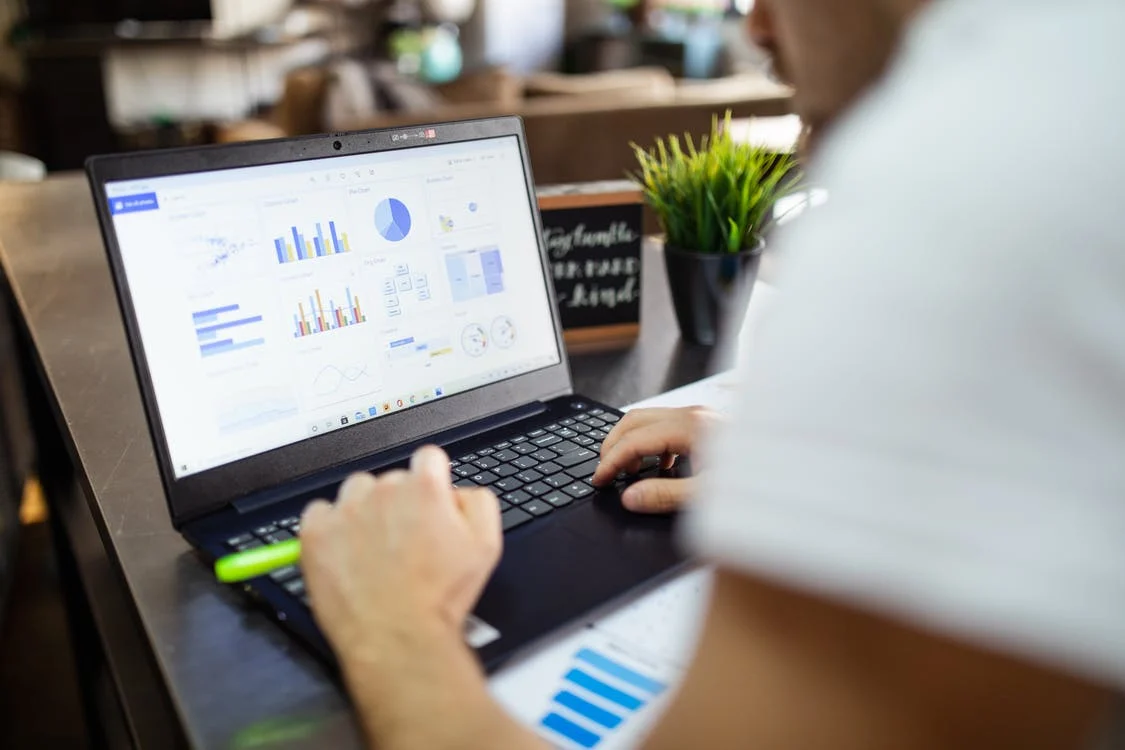In the world of online retail, you’d be amazed at how crucial your Amazon pricing strategy is. In fact, pricing your products correctly as an Amazon FBA seller is one of the most overlooked aspects to growing a store – but it’s far more important than just “ballparking” based on cost-of-goods and profit margin.
In this article, we’ll dive right into 11 tips & strategies to optimize your product prices – so you can maximize your profit margins & revenue, ease your cash flow situation, and take advantage of hot trends and seasons.
Use this outline to skip to any section of this page:
- Understand why pricing is crucial
- Determine your cost-of-goods-sold
- Research your competitors’ prices
- Determine your brand’s value
- Pinpoint your highest and lowest price
- Win the buy box
- Test and optimize as you gather data
- Adjust based on new feedback ratings
- Adjust based on time of year
- Adjust based on search volume & demand
- Bundle products together
- Run promotions and use discounts occasionally
Understand why strategically pricing your Amazon products is crucial
The pricing of your product is one of the most important aspects to selling on Amazon. It’s a comparison shopping website, so customers are constantly looking for the best deal. If customers don’t like your price, they’ll simply go to another listing and purchase from a different seller. In addition, pricing also determines your conversion rate, profit and revenue.
To maximize all three of these factors, you need to find the perfect balance between price and competition. If you’re too high, you’ll generate fewer sales and have a more difficult time growing your Amazon store. But if you’re too low, you might not make any profit at all – especially with rising supply chain & fulfillment costs.
Recovering up-front expenses
Keep in mind – the price of a product must be set in order to recover the costs of production, delivery and distribution, while also making a profit. The right price will also help to achieve a sustainable sell-through rate and prevent too much inventory from being accumulated and storage fees incurred.
In order to price a product correctly, businesses must have a clear understanding of their target market, their competition and their own costs. By taking all of these factors into account, businesses can ensure that they generate healthy profit margins and avoid any potential pitfalls.
Ultimately, it’s up to you to determine the optimal price point for your product, since every business and product line is different. But keep in mind – strategically pricing your products is a huge factor in finding success for Amazon FBA.
Determine your cost-of-goods-sold
So now that you know optimal product pricing is crucial… how do you determine the right price for your products? The first consideration is to calculate your cost of goods sold (COGS).
This figure includes the costs of materials and labor, as well as any other expenses associated with manufacturing the product. Once you have your COGS, you can add a reasonable profit margin and arrive at a price that will allow you to stay in business and still appeal to Amazon’s bargain-hunting shoppers.
To calculate COGS, start by…
- Adding up the total cost of the product and the shipping
- Adding in any other costs, such as packaging or fees
- Dividing this number by the number of units sold
This will give you your COGS per unit. Keep in mind that your COGS will vary depending on the product, the price point and how large your bulk orders are.
For example, a higher-priced product will have a higher COGS than a lower-priced product. Additionally, your COGS will change over time as your order sizes change – the bigger your inventory orders are, the lower your COGS will be (since your supplier will offer a discount for larger orders). Therefore, it’s important to recalculate your COGS regularly to ensure that you’re still making a profit on your sales.
One of the easiest ways to reduce COGS is to partner with an FBA prep company that can streamline and optimize your supply chain – especially with rising costs as of late.

Research your competitors’ prices
When selling products on Amazon, always pay close attention to the prices of your competitors. By monitoring their prices, you can ensure that you are keeping your own pricing strategy in-line – while shifting with competitor & market prices within your niche or product category.
Amazon offers a hyper-streamlined shopping experience on its website – allowing customers to compare a huge amount of products with ease (since the retail giant is heavily incentivized to give customers the optimal prices). This means customers are putting deep scrutiny into your products, your competitors’ products & every option at their disposal – because of the speed & simplicity at which they can comparison shop.
Keep in mind – some customers are bargain hunting, and some are looking for premium products that deliver 5-star quality. Understanding where your products fit within this spectrum is one of the main keys to pricing your Amazon FBA products.
Amazon pricing: determine your brand’s value
Another pricing factor involves having a good understanding of your brand’s value. There are a few different factors that you need to take into account when determining your brand’s value:
- First, consider the quality of your products. Are they made from high-quality materials and built to last?
- Second, look at your customer base. Who are your customers and what do they value? Do they prefer convenience or quality?
- Finally, think about your brand’s image. How does your brand compare to other brands in the same space?
Once you have a good understanding of your brand’s value, you can start to price your products accordingly. By taking the time to enhance your brand’s value and setting your products ahead of competitors, you can ensure that you are maximizing your profits and providing your customers with the best possible value.
For more on this topic, check out this Branding Tips to Increase Amazon FBA Sales article.
Pinpoint your highest and lowest price
As an Amazon seller, another factor that goes into product pricing is determining your highest and lowest-possible price points. Your highest price point should be the absolute maximum cost within your category among competitors, while your lowest price point should be the minimum amount that you need to make a small profit – and you’ll typically want a bare minimum 10% profit margin after calculating your COGS (but ideally 20-35%)
Once you have established these two points, you can then begin to research the prices of similar products on Amazon and adjust your own pricing accordingly. By taking the time to set your prices correctly, you will increase your chances of growing your business and generating a solid annual profit on Amazon.
Win the buy box
As you know, the Buy Box is perhaps the most coveted prize on Amazon for any seller – since it’s where customers can begin the purchasing process with just one click.
Winning the Buy Box not only significantly increases your sales, but also builds customer trust and credibility. So, how do you win the Buy Box?
Price is certainly a major factor, but it’s not the only one. Amazon also takes into account your seller history, product quality, and shipping speed when determining who wins the Buy Box. However, pricing your products competitively is still essential if you want to have a chance at winning the Buy Box on a regular basis.
By monitoring your competition and charging your products accordingly, you can give yourself the best chance of winning the Buy Box and boosting your sales on Amazon.
Test and optimize as you gather data
Before setting the price for any product, it is important to consider both the costs of production and the potential demand from consumers. Too high of a price will lead to few sales, while too low of a price may result in a loss for the business. Finding the optimal price point requires careful testing and analysis.
By incrementally changing the price and observing the effect on conversion rate and profitability, businesses can determine the ideal cost for their products. This process may take some time and effort, but it is essential for ensuring that products are priced correctly on Amazon. By taking the time to test different price points, businesses can maximize their profits and better serve their customers.

At higher price points, you’ll see a low conversion rate and sales volume – but your margins will be higher. Alternatively, at low price points, you’ll sell through inventory much faster at greater volume, but your profit margins won’t be great. It comes down to whether you want to generate a large amount of sales at low profit margins, or scale back revenue while boosting profitability.
This is where testing comes in – because there’s likely a “sweet spot” that maximizes efficiency between revenue and profitability. It also depends on your cash flow situation – do you have enough capital to move large amounts of inventory at low profit margins? If not, you might want to increase your prices, boost profit margins and slowly build-up sales volume.
Final tips for pricing your products on Amazon: adjust based on new feedback ratings
As an Amazon seller, it’s important to stay on top of your product’s feedback and ratings. By monitoring these metrics, you can quickly identify any areas that need improvement. For example, if your product suddenly starts receiving a lot of negative reviews, it could be a sign that something is wrong with the quality or packaging. In this case, you would need to take action to correct the issue and prevent further damage to your reputation – along with needing to lower your price to maintain sales.
On the other hand, if your product is consistently rated highly by customers, it could be a good idea to raise the price. This will help you maximize your profits and avoid leaving money on the table – since your high ratings will drive additional customers. Ultimately, by closely monitoring your feedback and ratings, you can ensure that your pricing is always in line with customer expectations.
Adjust based on time of year
Seasonality is an important factor to consider when setting the price of your Amazon products. As demand increases during certain times of the year, so too should the price of your product. For example, if you sell a summer-related product, you may want to consider raising prices during the summer months when demand is highest.
On the other hand, if you have a product that is often purchased as a holiday gift, you may want to experiment with discounts and special pricing during the lead-up to holiday shopping season.
Keep in mind – as demand increases, you can generally raise your price while maintaining sales volume at the same time. By taking seasonality into account, you can ensure that your prices are aligned with customer demand, helping you to maximize your profits and move inventory at the same rate (or faster).
Adjust based on search volume & demand
As an Amazon seller, it’s important to stay aware of trends in search volume for your products. A sudden increase in demand can signal that it’s time to raise your prices – especially when it’s driven by social media hype and a sudden wave of customers start buying your product. However, a decrease in demand may indicate that it’s time to lower your prices (or you can simply adjust your next bulk purchase with your supplier – along with potentially removing it altogether). By monitoring search volume and adjusting your pricing accordingly, you can ensure that you’re maximizing your profits.
Of course, this is just one factor to consider when setting prices for your products. Ultimately, the right price is the one that meets customer demand while also allowing you to make a healthy profit. But by paying attention to trends in search volume, you can stay ahead of the competition and ensure that your prices are always competitive.
Bundle and price Amazon products together
Product bundling is an ecommerce strategy that involves packaging together two or more products and selling them as a single unit. This strategy can be an effective way to boost sales and appeal to customers who are looking for a good deal. When done correctly, product bundling can also help you clear out inventory and improve your margins. If you’re selling products on Amazon, there are a few things you should keep in mind when pricing bundled products.
- Make sure that the bundled price is lower than the total price of the individual products. This will ensure that customers see the bundle as a good deal.
- Price your bundles competitively with similar bundles from other sellers. Keep in mind that customers will often compare prices before making a purchase, so it’s important to stay competitive.
- Consider how the bundle will impact your shipping costs. In some cases, it may be cheaper to ship two smaller items separately than it would be to ship one larger item. If this is the case, you may want to adjust your pricing accordingly.
In addition, bundling items together can help you clear out excess inventory and free up storage space. So if you’re looking for a way to give your customers a better deal, consider adjusting your prices to create bundles. It’s a win-win for both you and your customers.
By taking these factors into account, you can ensure that your product bundles are appealing to customers and profitable for your business.

Run promotions and use discounts occasionally
By using promotions or discounts, you are able to reach a larger audience with your product – often on the 1st page of Amazon’s search engine (which normally takes thousands of dollars to achieve).
Promotions and discounts can also increase your sales volume by making your products more financially attractive to potential buyers. However, you need to be careful not to undercut yourself or you could end up losing money. Instead, focus on offering modest discounts that will still allow you to turn a profit.
You can also use promotions as a way to clear out older inventory that’s taking up space in your warehouse. By offering a discount, you can entice customers to buy products that they might not otherwise consider. Promotions and discounts can be a powerful tool in your Amazon selling arsenal, so use them wisely.
In addition, by offering promotions and discounts, you will be able to increase the number of reviews for your product. This can help you further improve your ranking in Amazon’s search results and increase traffic to your listing – along with boosting the conversion rate and profitability.
Ultimately, by using promotions and discounts, you will be able to drive more sales volume and to generate more buzz for your product – without needing to run ultra-expensive growth marketing strategies. Just make sure to keep your profit margin above 10%.
Final thoughts on pricing your products on Amazon FBA
Any business owner will tell you that success is not easy to come by. In today’s competitive landscape, businesses must fight for every customer and every dollar. This is especially true on Amazon, where sellers must contend with a vast array of competitors. To succeed on Amazon, optimizing your pricing strategy is essential.
When it comes to pricing, Amazon is a different beast than other e-commerce platforms. Because Amazon is so competitive, sellers must be strategic in their pricing in order to win the Buy Box. Studies have shown that the majority of customers will only purchase products from the seller who is featured in the Buy Box – as we mentioned above.

